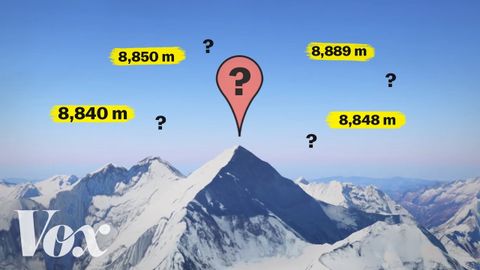
Subtitles & vocabulary
Why Mount Everest's height keeps changing
00
林宜悉 posted on 2021/03/16Save
Video vocabulary
average
US /ˈævərɪdʒ, ˈævrɪdʒ/
・
UK /'ævərɪdʒ/
- Noun (Countable/Uncountable)
- Total of numbers divided by the number of items
- Transitive Verb
- To add numbers then divide by the number of items
A2TOEIC
More measure
US /ˈmɛʒɚ/
・
UK /ˈmeʒə(r)/
- Noun (Countable/Uncountable)
- Plan to achieve a desired result
- Tool used to calculate the size of something
- Transitive Verb
- To determine the value or importance of something
- To calculate size, weight or temperature of
A1TOEIC
More precise
US /prɪˈsaɪs/
・
UK /prɪ'saɪs/
- Adjective
- (Of language details etc.) Very accurate and exact
- (Of a time, place, quality) exact
A2TOEIC
More continent
US /ˈkɑntənənt/
・
UK /ˈkɒntɪnənt/
- Noun (Countable/Uncountable)
- Very large piece of land, e.g. Africa or Asia
- Adjective
- Able to control excretory functions (bowel and bladder).
B1
More Use Energy
Unlock All Vocabulary
Unlock pronunciation, explanations, and filters
